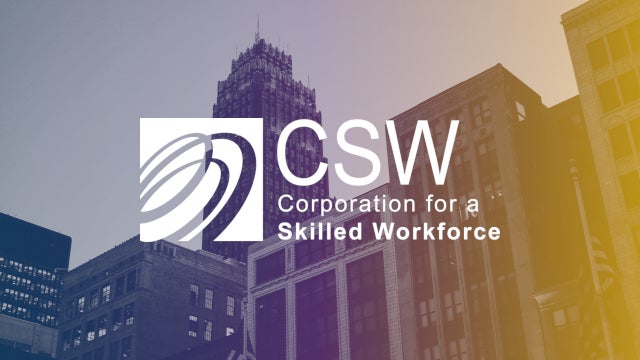Workforce development professionals work hard to connect un- and underemployed workers with job opportunities, training and education, and supportive services (such as childcare) with an expectation this will lead to a high-quality job with a living wage, decent benefits, and opportunities for advancement. And workforce professionals are increasingly charged with advising and guiding partner employers and firms to improve their hiring, retention, advancement, and compensation practices. Despite this focus on job quality, however, the workforce often struggles with its own job quality issues. To quote the old expression, “The cobbler’s children have no shoes.”
For example, a pre-pandemic survey found that half of workforce professionals in New York City earned less than the city’s median wage, and over a quarter indicated they did not earn enough to cover basic expenses. Additionally, that same study found that people of color made up 80% of the city’s workforce development staff, yet higher earners and organizational leaders were disproportionately white. Low wages — and the disparities layered on top of them — can render it challenging for staff to do their jobs as they coach clients about financial security while grappling with economic instability of their own. It should come as little surprise that half of those surveyed considered leaving their jobs within the year. This turnover can take its toll on services built up through long-term relationships with workers who workforce professionals guide through work transitions; employers whose talent needs they understand; and partner organizations with whom they are building critical career paths.
At the same time, in the broader workforce, discrimination in hiring has mainly remained the same over the past two decades, and employer investments in training people of color are substantially less than investments in their white counterparts. The workforce development field, in principle, could make a difference. Workforce organizations have strong links to employers — particularly small and medium-sized businesses — and connections to talent pools that include many potential workers of color. Unlocking this potential depends on addressing job quality and racial equity within the field itself.
A locally based, field-wide talent development strategy is a promising solution. While the workforce field is often maligned as being fragmented or siloed, the nature of its work is inherently interdisciplinary, encompassing efforts from community-based organizations, local government agencies, community colleges, economic development entities, and industry associations. Together, these organizations can help job seekers enter and advance in the workforce, and they can help employers improve their hiring, training, and advancement practices. While federal and state government policies shape many of these services, it is at the local level where practitioners must break down the silos and weave the components into coherent systems and services that balance the needs of both workers and businesses. As collaboration grows at the speed of trust, a local talent strategy can also build the strong relationships on which both trust and collaboration flourish.
One approach to investing in talent development and fostering collaboration is the Aspen Institute’s Workforce Leadership Academies, which unite workforce leaders in a particular city or region to identify and address systems-based challenges. The Academies — whose curricula are developed by the Institute’s Economic Opportunities Program and implemented by local partners on the ground — offer space for Fellows to deepen their networks, strengthen systems change frameworks, and create a shared vision for change. The Academies are a powerful vehicle for talent development and collaboration, enabling workforce leaders to tackle practical systemic challenges and build networks that nurture change within the field. Based on the engagement of Academy Fellows, it’s clear that workforce professionals are eager to play an active role in shaping the future of their local ecosystem.
However, leadership development is just one element of a comprehensive talent strategy. A comprehensive strategy must also address policy, funding, and systems issues that affect the compensation structure in a largely underfunded field. For example, the workforce system’s reliance on short-term contracts and its focus on minimizing service and program costs make it difficult to pay workforce professionals living wages and provide them with job stability difficult, contributing to high turnover. Turnover, however, imposes its own costs in expenses for recruiting and onboarding new staff and supporting them as they learn the job; thus, the low-pay, high-turnover model accomplishes neither cost savings nor effective service delivery. By providing greater job stability, the field can retain valuable talent and build stronger professional relationships that help collaboration grow and the ecosystem thrive, providing value for resources invested.
Many workforce organizations and leaders are already focused on developing the workforce field’s own talent. For example, many of our local Academy partners are engaged in front-line skills training, local policy convenings, and multiple approaches to leadership development. This Labor Day, we invite you to join the conversation and share here what talent development efforts you are involved with. Also, look out for upcoming conversations with local Academy partners as they talk about how their work is ushering in a future where the workforce development field is more reflective of the change it seeks to cultivate. Let’s keep cobbling these children more shoes!
Learn more
The Economic Opportunities Program advances strategies, policies, and ideas to help low- and moderate-income people thrive in a changing economy. Follow us on social media and join our mailing list to stay up-to-date on publications, blog posts, events, and other announcements.

